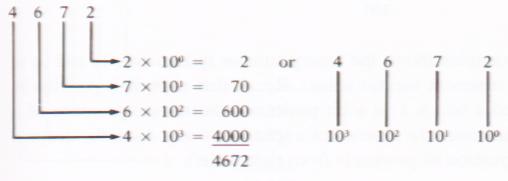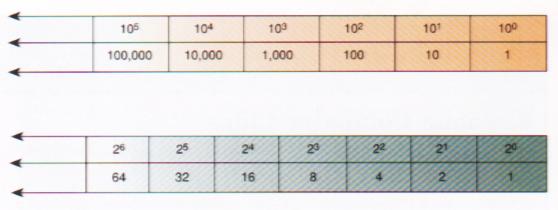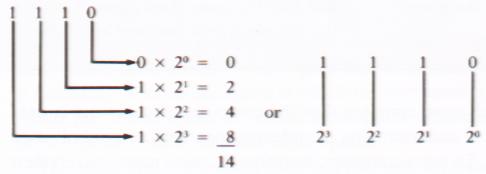
The binary (base 2) number system operates in a manner similar to the way the familiar decimal number system works. For example, the decimal number 4,672 can be analyzed as follows:

Each position represents a specific power of 10. The progression of powers is from right to left; that is, digits further to the left in a decimal number represent larger powers of 10 than digits to the right of them (see Figure below).

The same principle holds for binary representation. The difference is that in binary representation each position in the number represents a power of 2 (see Figure above).
For example, consider the decimal number 14. In binary, the value equivalent to 14 is written as follows:

As a further example, the value represented by the
decimal number 300 is represented in binary form below:
As indicated by the examples above, the binary number system uses l's and O's in various combinations to represent various values. Recall that each digit position in a binary number is called a bit. A 1 in a bit position indicates the presence of a specific power of 2; a 0 indicates the absence of a specific power. As in the decimal number system, the progression of powers is from right to left.